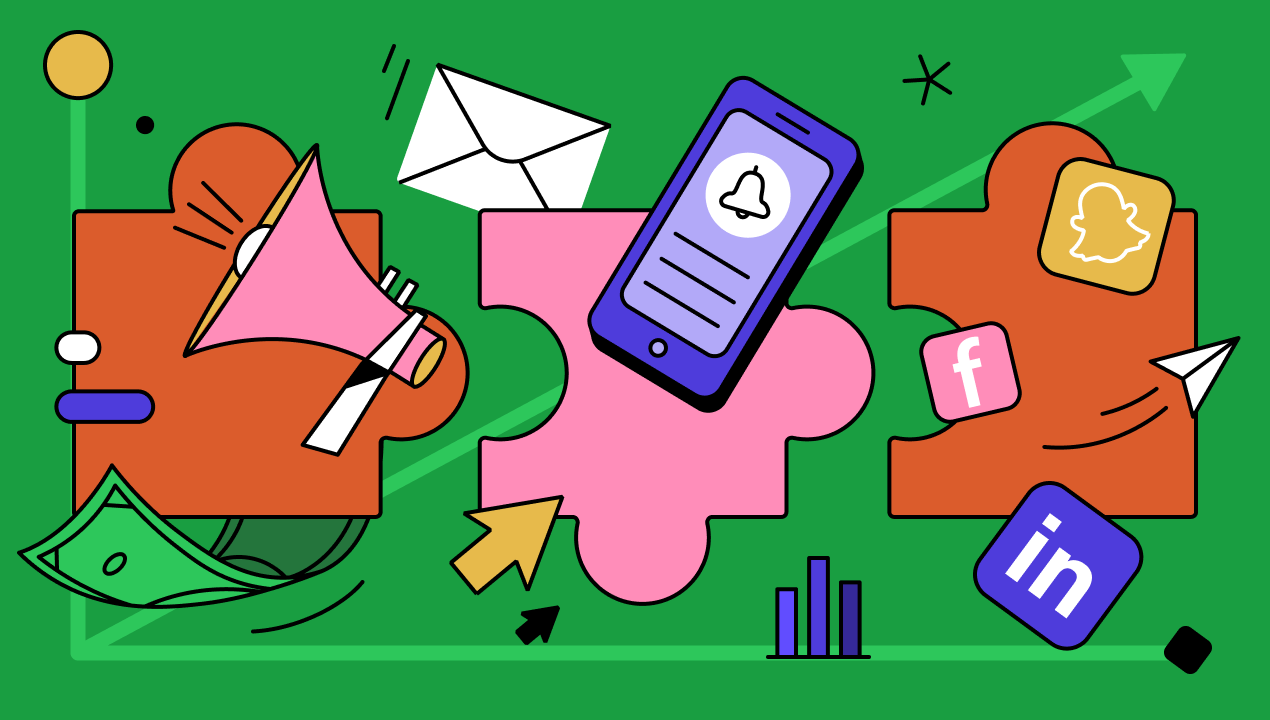Imagine you could streamline your PR efforts and amplify your brand’s reach just by one decision on strategy. How? Use a strategic blend of paid, owned and earned media.
This article will unravel the complexities of these three media types. And we will show you how to leverage each to maximize your PR strategy.
Let's dive into the synergy of paid, owned and earned media and transform your brand's presence and impact.
Don't stand in the dark when it comes to spending your budget. Monitor your paid, owned and earned media efforts with Prowly.
- Integrating media types into Public Relations strategies
- What is paid media?
- Tips for adding paid media to a PR strategy
- What is owned media?
- Tips for adding owned media to a PR strategy
- What is earned media?
- Tips for adding earned media to a PR strategy
- Comparing paid, owned and earned media
- Paid, earned and owned media campaign examples
- FAQ
Integrating media types into Public Relations strategies
Synergy is key here. All three media types should be mixed in just-the-right proportions to create a cohesive whole.
What is paid media?
Paid media refers to any form of advertising that you pay for. This means social media ads, DOOH, TV advertising ads, and sponsored content.
Benefits
With paid media, you have more control over the published content. If you take a closer comparison of paid media vs earned media, it is also easier to scale down or scale up your efforts (just adjust your budget).
You can also precisely target your ads. Just define your essential criteria.
Challenges
👉🏼 As the name suggests, you have to pay for it.
So in some niches, to reach your targets, you should have some (actually way more than “some”) coins in your wallet, aka an advertising budget.
👉🏼 The digital advertising space is rather crowded.
Many brands are all vying for the same audience. This drives up the cost of ad placements as well as makes it harder to stand out.
👉🏼 This next one is a big one.
And you probably have yours on right now – ad blockers. These make it difficult for businesses to reach their target audience through traditional online ads.
👉🏼 Privacy & data protection.
There are arisen concerns around privacy and the implementation of data protection regulations (such as GDPR and CCPA). These can limit the available data to aid in targeting ads, reducing their effectiveness.
And to make sure you know how people react to your ads, monitor relevant keywords with Prowly.
Tips for adding paid media to a PR strategy
1️⃣ Set goals, keep them SMART.
Remember that you don't have to reach all of your strategic goals by this form of media alone.
2️⃣ Get to know your target audience.
Who they are and what they are doing online. Learn about their go-to digital platforms. And pay to get your message directly before them.
3️⃣ Once your advertisements are ready, provide some A/B testing.
Check what content resonates with your audience best.
What is owned media?
The main difference when it comes to paid media and owned media is ownership. The latter refers to the digital assets and channels that your brand fully controls and manages.
Examples of owned media include your website and blog, social media profiles, and newsletters.
Benefits
If you put owned, earned and paid media in line, the first wins when it comes to control. You have 100% control of what is published across these channels. Moreover, you can take care of the content's consistency and keep it evergreen.
There is no framework or deadline you have to meet, so you can publish as frequently and as long as you want.
Challenges
👉🏼 To make it work you should look after quality and be consistent in your work.
In other words, owned media requires a lot of effort.
👉🏼 Keeping your organic content popping up on the SERP means no small touch of SEO magic.
This includes keyword research, on-page optimization, link building, and keeping updated with search engine algorithm changes.
👉🏼 Unlike paid media, building a substantial following on owned media platforms takes time and effort.
It requires a strategic approach to attract and retain followers organically.
👉🏼 Generating new ideas and maintaining a fresh perspective all the time can be challenging.
Stale or repetitive content can lead to a bored audience and reduced outcomes.
Tips for adding owned media to a PR strategy
1️⃣ Consistency helps build trust as well as your brand's recognition.
Be consistent in your posting schedule, brand voice, and messaging across all owned media channels.
2️⃣ Shuffle formats.
Use blog posts, videos, infographics, podcasts, and social media news. There are so many to choose from. Different formats can appeal to different audience segments.
3️⃣ Plan your content using a content calendar.
This helps ensure a steady flow of content and allows you to plan it around key dates, events, and marketing campaigns.
What is earned media?
Earned media refers to the exposure and publicity you gain through word-of-mouth, media coverage, or other forms of public recognition that you do not pay for. The key difference between paid and earned media is the money.
Some examples of earned media are testimonials, awards, and social media mentions.
Benefits
When you put earned media and paid media next to each other and ask people which one is more trustworthy, there is a nearly 100% chance that the crowd will stand by earned. It builds credibility.
Moreover, earned vs paid media – cost speaks for itself. You don't have to spend a penny to be mentioned across social media.
Challenges
👉🏼 It takes a lot of effort and work to build credibility with your audience and be positively recognizable.
👉🏼 When comparing paid, earned and owned media, the shared channels where earned media roams mean basically no control.
Content like mentions from users or influencers aren’t under your control (unless it’s a paid partnership). They shape their narrative and sometimes their perspectives might not align perfectly with your brand’s message. While you can respond to earned media, it’s hard to predict if you’ll be able to address any issues quickly.
👉🏼 Earned media can be unpredictable.
Securing positive coverage can require significant effort and may not always yield results.
Tips for adding earned media to a PR strategy
#1 Newsworthy stories and press releases
Focus on crafting compelling and newsworthy stories. They will capture media interest. Highlight unique angles or industry trends. And make your content stand out.
With Prowly, you can use the help of AI to create compelling stories for your press releases. Just follow simple steps and never suffer writer’s block again.
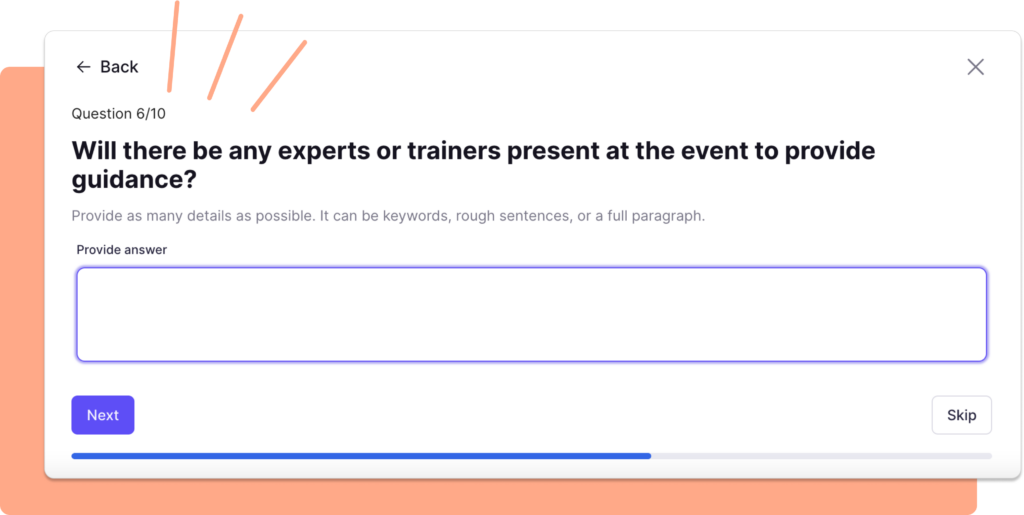
All you need to do is answer the questions as precisely as you can and add a human touch to the final draft.
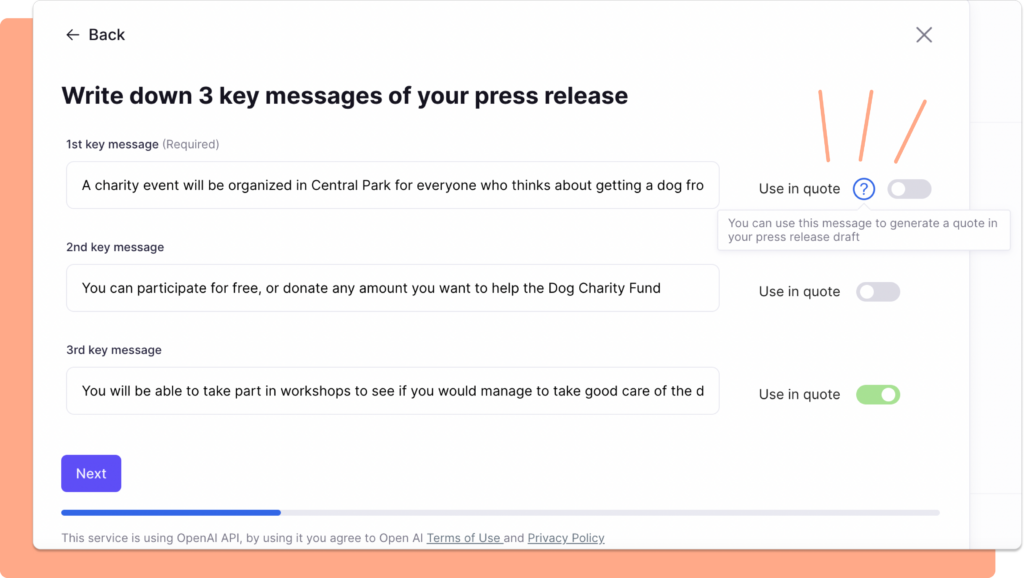
Create your own polished press releases with the help of Prowly’s AI assistant today.
#2 Relationships with the media
Build relationships with journalists and influencers. With Prowly you can search its Media Database to find the best ones in your niche and build a strong bond with them with AI Assistant’s help.
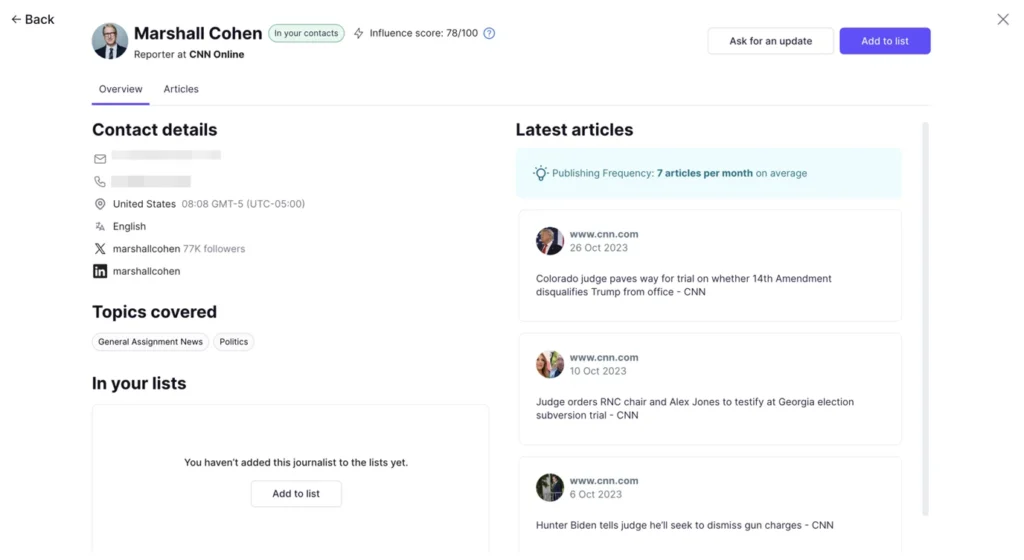
You can enhance your messaging in the pitch with AI suggestions regarding topic, and email’s text. AI will also help you find the most suitable contacts. You can narrow down your search with advanced filters, to see who truly writes about topics similar to yours.
#3 Digital & traditional media monitoring
Monitor media mentions. When it comes to earned media, you have to keep your finger on the pulse.

Check the sentiment, measure AVE and Share of Voice and add tiers to the media that mentioned to you show the value of your PR work to stakeholders with ease.
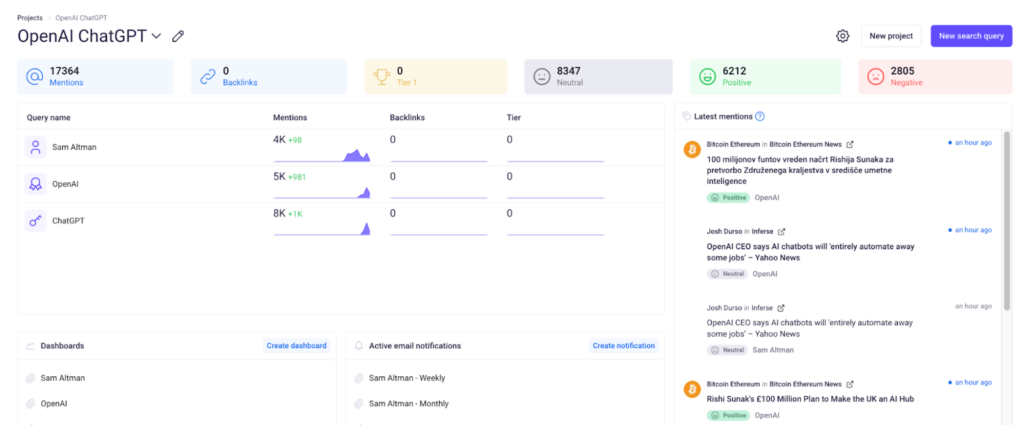
To explore the earned media strategies for PR deeply, read 14 Tips for Creating a Successful Earned Media Strategy
Comparing paid, owned and earned media
Undoubtedly, there is a big difference between earned, owned and paid media.
But only all three, owned, paid and earned media, complete each other.
For example, paid media can drive traffic to your owned media channels, like websites or blogs.
Earned media acts as social proof and builds trust. So there is a higher chance to earn paid media placements. And so on, and so on.
Below you can find an in-depth comparison of paid, owned and earned marketing and you can also see how each of them influences your PR strategy.
| Factor | Paid Media | Owned Media | Earned Media |
| Cost | Higher cost; involves spending on ads, sponsorships, and partnerships. | Moderate to low cost; involves investment in content creation and maintenance. | Low cost or free; relies on organic methods and relationships. |
| Reach | Targeted and scalable; can be directed at specific demographics. | Potentially broad but limited by owned audience size. | Potentially broad but unpredictable; relies on shareability and organic traction. |
| Credibility | Lower; seen as promotional and potentially biased. | Moderate; seen as reliable but may lack objectivity and third-party validation. | High; perceived as unbiased and more trustworthy. |
| Control | High; full control over content, timing, and placement. | Very high; complete control over content and platforms. | Low; limited control over timing and methods of sharing your message. |
| Longevity | Short-term; lasts only as long as the paid campaign runs. | Long-term; continues to provide value as long as content is maintained. | Long-term; continues to provide value as long as it remains accessible. |
Use Prowly's media monitoring to stay in the loop.
Paid, earned and owned media campaign examples
Let's compare earned media vs paid media vs owned media in life-based examples.
Paid media campaign: Coca-Cola's "Share a Coke"
Coca-Cola replaced its iconic logo on bottles with popular names. It was a way to encourage people to find bottles with their names and share them on social media.

Impact: This campaign increased Coca-Cola's sales and garnered extensive social media engagement.
💡 PR lesson
A very simple idea, such as adding names to bottles, created a huge wave of involvement. When consumers see their name or that of someone they care about on a product, it increases their affinity for the brand. This personal touch can enhance brand loyalty and lead to more frequent purchases.
Earned media campaign: ALS Association's "Ice Bucket Challenge"
What a viral sensation it was. People dumping buckets of ice water over their heads, sharing the videos online, and challenging others to do the same while donating to ALS research. This action would become a benchmark for a long time to come.
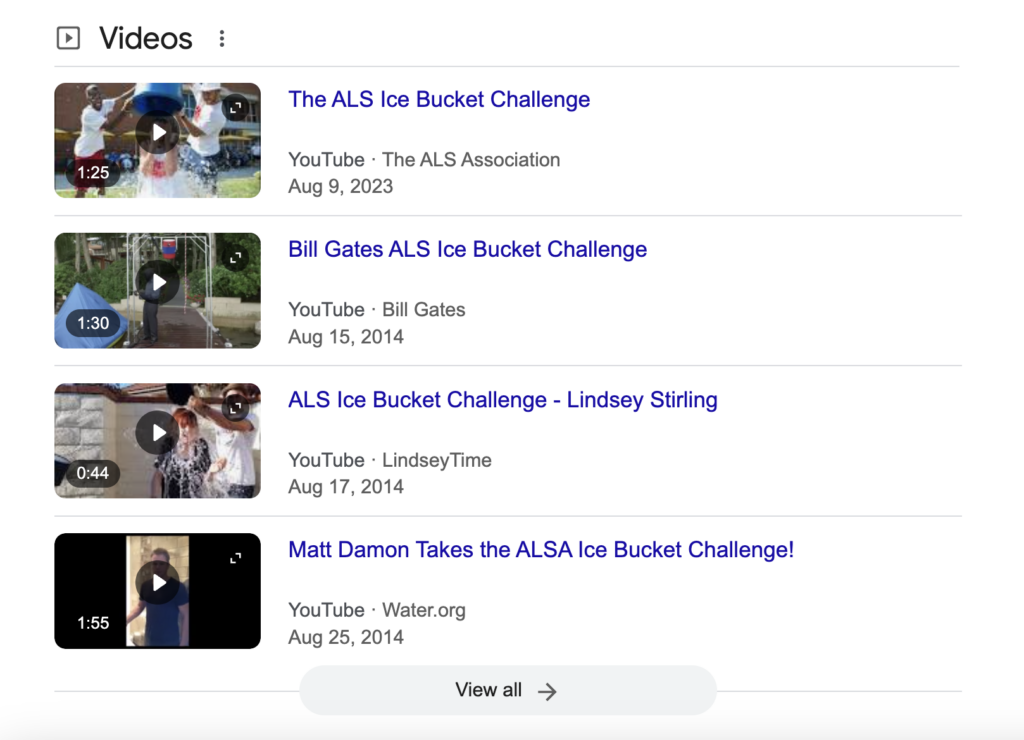
Impact: The campaign raised over $115 million. Moreover, it significantly increased ALS awareness.
💡 PR lesson
The difference between earned and paid media shows that you can't buy everything. There wasn't a single penny put into this action. Hence, what a success it was.
By getting people from all kinds of backgrounds involved and making the challenge an action everyone could take part in, the campaign created a strong sense of community and teamwork. Participants felt like they were a part of something bigger. So they were motivated by the social connections and a simple dose of fun.
Looking for more inspiration to elevate your brand awareness?
👉 Enhance your strategy with real-life examples from this article.
👉 Check out guide to brand awareness campaigns (with examples).
Owned media campaign: Red Bull's Content Marketing Strategy
Red Bull produced a diverse range of catchy content. From thrilling extreme sports videos and live events to a dedicated media hub that delivers articles, videos, and social media updates.
Impact: Name the first brand that comes to your mind once you hear the word adventure. You see? Red Bull has positioned itself as a leader in the field. All by building a strong brand identity and community around its owned media platforms.
💡 PR lesson
Earned, paid, and owned media all highlight the importance of a multi-channel approach. This is especially evident in owned media, where Red Bull excels by creating content across diverse platforms using videos, events, articles, and social media. By leveraging multiple touchpoints, Red Bull ensures it reaches audiences effectively, boosting its visibility and impact.
Frequently asked questions
💬 Is PR paid, owned or earned media?
Public Relations (PR) primarily falls under earned media. Once you take a closer look at the difference between earned media and paid media, as well as owned media, you can see that public relations activities aim to secure media coverage.
This, in addition to building relationships with journalists/influencers and generating positive mentions of their brand in the press. There is direct money involved in gaining this coverage either, and you cannot control every aspect of your PR outcomes.
💬 Is influencer marketing paid, owned or earned media?
Influencer marketing can be classified into two categories. Paid media and earned media. You can collaborate with an influencer to get a buzz going or gain social media mentions through their channels on your own.
💬 Where exactly does social media fall into PESO?
PESO stands for paid, earned, shared, and owned media. Primarily, social media fits in as shared media but also has aspects that can overlap with owned media.
If you'd like to know more about this topic, check out the article: What is the PESO Model in PR? Definition & Examples.
Owned media, earned media and paid media – conclusions
This comparison of paid vs owned vs earned media should light your way to composing your own PR strategy.
A balanced integration of earned, owned, and paid media is the key. As paid media amplifies reach. Owned media gives you a controlled platform to spread your message. And earned media builds credibility and trust. Together, these elements create a synergy that can boost your brand's visibility and audience engagement.
Leverage your strategy in all media types with the right tool. Monitor all platforms and get to know your audience better with Prowly.
